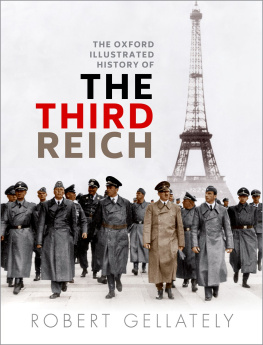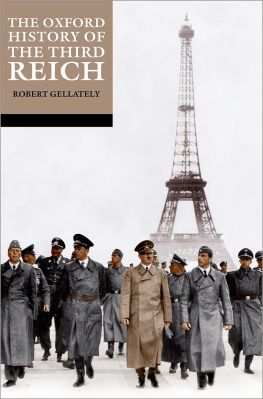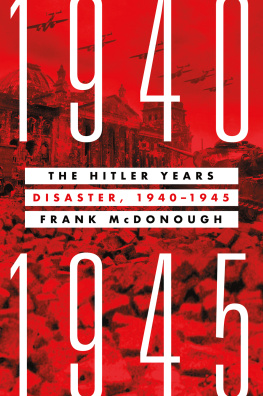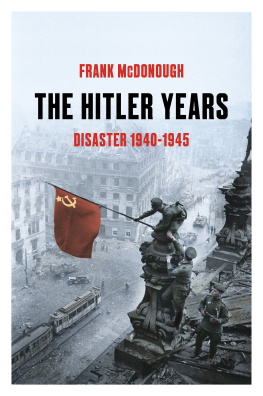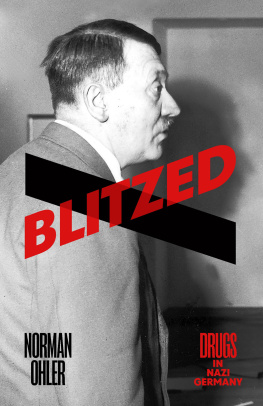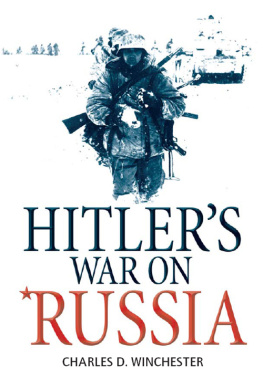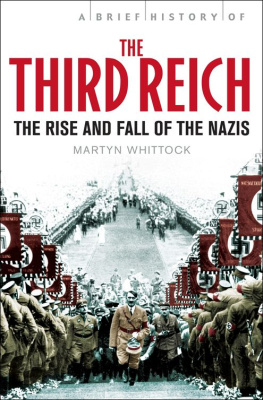THE OXFORD ILLUSTRATED HISTORY OF
THE THIRD REICH
The historians who contributed to The Oxford Illustrated History of The Third Reich are all distinguished authorities in their field. They are:
OMER BARTOV, Brown University
HERMANN BECK, University of Miami
DAVID F. CREW, The University of Texas at Austin
ROBERT GELLATELY, Florida State University
PETER HAYES, Northwestern University
RALPH JESSEN, University of Cologne
JONATHAN PETROPOULOS, Claremont McKenna College
DIETER POHL, Alpen-Adria-Universitt Klagenfurt
HEDWIG RICHTER, Hamburg Institute for Social Research
MATTHEW STIBBE, Sheffield Hallam University
JULIA S. TORRIE, St. Thomas University

Great Clarendon Street, Oxford, ox2 6dp , United Kingdom
Oxford University Press is a department of the University of Oxford. It furthers the Universitys objective of excellence in research, scholarship, and education by publishing worldwide. Oxford is a registered trade mark of Oxford University Press in the UK and in certain other countries
Oxford University Press 2018
Copyright in the Introduction and Robert Gellately, 2018.
All rights reserved
The moral rights of the authors have been asserted
First Edition published in 2018
Impression: 1
All rights reserved. No part of this publication may be reproduced, stored in a retrieval system, or transmitted, in any form or by any means, without the prior permission in writing of Oxford University Press, or as expressly permitted by law, by licence or under terms agreed with the appropriate reprographics rights organization. Enquiries concerning reproduction outside the scope of theabove should be sent to the Rights Department, Oxford University Press, at the address above
You must not circulate this work in any other form and you must impose this same condition on any acquirer
Published in the United States of America by Oxford University Press
198 Madison Avenue, New York, NY 10016, United States of America
British Library Cataloguing in Publication Data
Data available
Library of Congress Control Number: 2017939066
ISBN 9780198728283
ebook ISBN 9780191044021
Printed in Italy by
L.E.G.O. S.p.A.
Links to third party websites are provided by Oxford in good faith and for information only. Oxford disclaims any responsibility for the materials contained in any third party website referenced in this work.
Contents
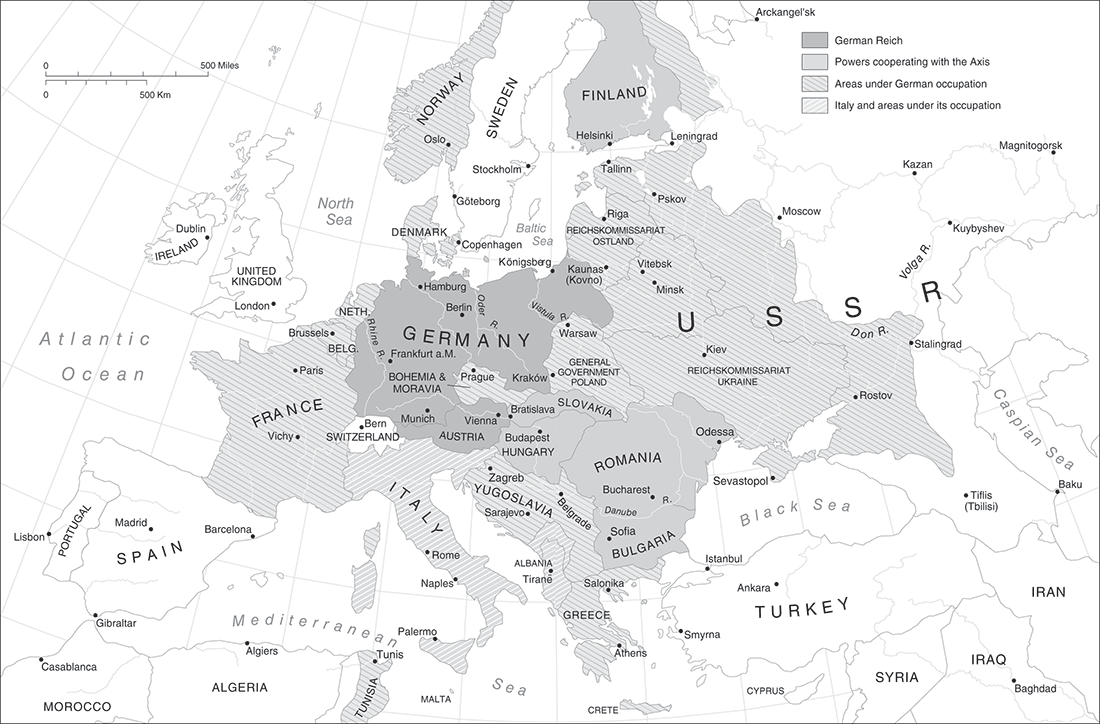
0.1 Europe under German domination in 1942 (courtesy of Robert Gellately).
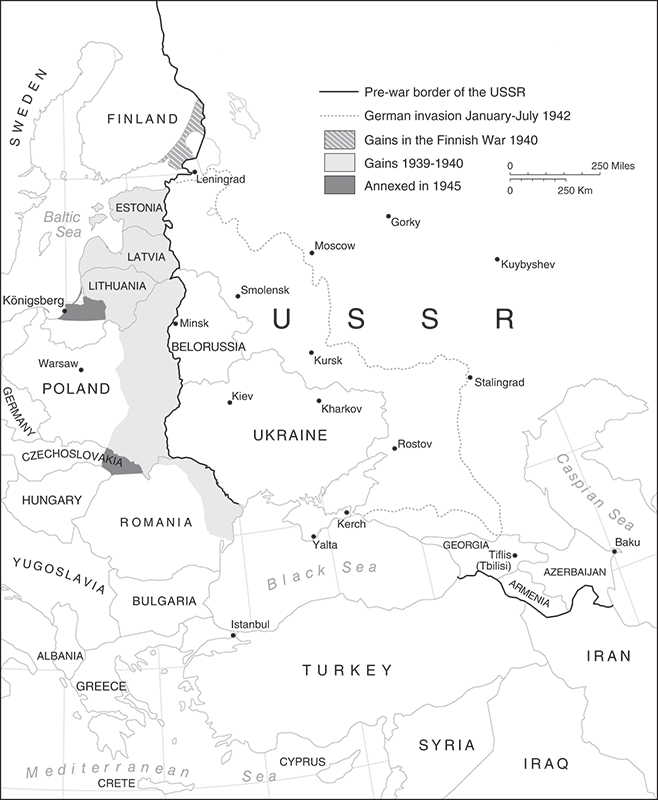
0.2 Western USSR and territorial acquisitions under Stalin (courtesy of Robert Gellately).
Historians today continue raising questions about the Third Reich, especially because of the unprecedented nature of its crimes, and the military aggression it unleashed across Europe. Much of the inspiration for the catastrophic regime, lasting a mere twelve years, belongs to Adolf Hitler, a virtual non-entity in political circles before 1914.
He had been born in 1889 and was not even a German citizen. Moreover, during his largely normal youth in Austria-Hungary, he revealed no signs of his future, and by age twenty he was a drifter with little education and socially withdrawn. He had no passionate ambitions save to become an artist of some kind, a vocation for which he had no formal training. He dabbled in painting, vaguely aspired to become a designer of the sets for the operas he adored, yet on that score, he made no progress whatsoever, and in the autumn of 1909, he hit rock bottom when he landed in a Viennese homeless shelter. In February the next year, he left to take residence in a mens hostel, where he stayed for just over three years, when in May 1913, thanks to receiving a tidy sum of money that was due from his fathers inheritance, the artist Adolf Hitler left for Munich, with dreams of becoming an architect. Once more, however, he made few friends, could find no work, and again had to paint postcards to get by. He appeared doomed never to achieve much of anything, given the existing order with its rigid class and political structures that allowed relatively little social mobility. But then the coming of what would be the Great War in 1914 turned the world upside down. The prospect of fighting for Germany excited this young mans nationalism, as it did for millions of others in nearly all parts of the globe, and he soon volunteered. The war would have revolutionary consequences, driving out the old orders, and ultimately making it possible even for social outsiders such as him to entertain lofty ambitions.
However, in November 1918, on his return from the war lost by Germany, we have no evidence that Hitler dreamed of becoming some kind of revolutionary leader, and his ambition was the more modest one of staying in the army as long as he could. Like so many in Germany, he was convinced that the Home Front had betrayed the undefeated army, had stabbed it in the back, and, like millions of others, he would believe in this legend for the rest of his life.
At age thirty, he could count practically no accomplishments and he remained a rootless loner, a corporal in the shattered army, with no money and few prospects. However, he soon attracted the attention of officers on the lookout for enlisted men they could train to address the demobilizing troops with nationalist messages. During the brief schooling that followed, Hitler did quite well. In the course of 1920, he helped found a new political entity, the National Socialist German Workers Party (NSDAP), or Nazi Party. He quickly became its leading figure, though the ragtag operation was only one among the dozens like it on the political landscape of the dispirited country.
A little more than twenty years later and astonishingly, in autumn 1941, Adolf Hitler, now fifty-two years old had become Germanys unrivalled and worshipped leader, standing at the head of a restored economic powerhouse. Moreover, by mid-1940, he had rebuilt, armed, and used decisively the newly named Wehrmacht to defeat Poland and more remarkably still, to capture most of Western Europe. Then a year later, he had directed his dynamic armies against the Soviet Union, so that in December, the Germans were at the gates of Moscow and Leningrad.
At that moment in late 1941, Hitler appearedhowever brieflyto be the most powerful ruler on the planet. He could survey a vast continental empire that included nearly all of Europe from the English Channel, then north to Norway and east to Leningrad, onward far south into the Caucasus; and in a grand arc southwestwards, to the Balkans, Greece, and parts of North Africa. By now the new Germany, in its quest for more living space had shaken the foundations of western civilization to its core, and was in the midst of a mass murder campaign aimed mainly at the Jews across Eastern Europe. Before its collapse, the Third Reichs deeds would turn it into the epitome of evil, and it would leave scars across Europe and beyond that remain visible to this day.

